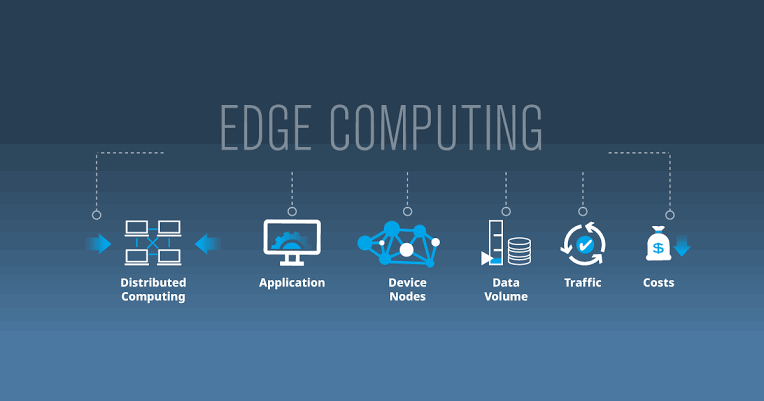Discover the top 10 edge computing platforms that enhance data processing by bringing computational power closer to data sources. Explore features, benefits, and use cases of platforms like Microsoft Azure IoT Edge, AWS Greengrass, and Google Cloud IoT Edge, and learn how they can improve efficiency and real-time analytics in various industries.
Top 10 Edge Computing Platforms
Introduction
The emergence of computing is revolutionizing how data is handled and examined by placing processing capabilities near the point where data is generated. This transition boosts performance minimizes delays and enhances overall effectiveness. As the popularity of devices, intelligent urban environments and instant data analysis grows edge computing solutions are gaining significance. This article delves into the leading edge computing platforms highlighting their characteristics advantages and practical applications.
1. Microsoft Azure IoT Edge
Microsoft Azure IoT Edge brings the power of Azure cloud services to devices allowing for processing and analysis of data. It works with operating systems and easily connects with Azure offerings like Azure Machine Learning and Azure Stream Analytics. With security measures like device authentication and encryption Azure IoT Edge ensures that data stays protected, at the level. It's well suited for situations that need analytics and machine learning on the like manufacturing and smart building environments.
2. Amazon Web Services (AWS) Greengrass
AWS Greengrass brings the power of AWS cloud to devices enabling them to process data locally while utilizing the cloud for management and analysis. It allows for the execution of AWS Lambda functions making it ideal for applications that demand quick response times and efficiency. Greengrass seamlessly integrates with AWS services such as Amazon SageMaker for machine learning and Amazon Kinesis for data streaming. Its applications span across sectors like retail, logistics and industrial automation.
3. Google Cloud IoT Edge
Google Cloud IoT Edge extends Googles cloud analytics and machine learning prowess to edge devices. It facilitates processing and instantaneous decision making by utilizing TensorFlow Lite for edge machine learning. This platform accommodates a variety of devices and seamlessly connects with Google Cloud offerings like BigQuery and Pub/Sub. Its advantages are notable in realms like smart cities, self driving cars and industrial Internet of Things.
4. IBM Edge Application Manager
IBM Edge Application Manager is a cutting edge computing platform that uses intelligence to oversee and implement applications in settings. It accommodates both cloud based and on site software solutions while seamlessly integrating with IBM Cloud Pak for Data and IBM Watson for added AI functionality. With its analytics and automation capabilities the platform proves valuable in sectors like healthcare, telecommunications and energy.
5. Cisco Edge Fog Fabric
Cisco Edge Fog Fabric offers an all in one solution for computing that blends networking, security and data processing functionalities. It accommodates a variety of devices and seamlessly integrates with Ciscos networking hardware and software offerings. This fabric is tailored, for edge applications like surveillance, industrial automation and smart grid systems. With its security features and centralized management capabilities it ensures efficient edge deployments.
6. Dell Technologies VxRail
Dell Technologies VxRail is a computing solution that blends infrastructure with edge computing functionalities. Its purpose is to cater to various edge scenarios such as remote office setups and edge data facilities. VxRail seamlessly integrates with VMs software defined infrastructure providing features like automated lifecycle management and ensuring operational uptime. This platform is well suited for sectors like retail, healthcare and finance.
7. HPE Edgeline
Hewlett Packard Enterprises (HPE) Edgeline lineup presents tough edge computing solutions tailored for environments. These Edgeline systems offer computing power, data storage capabilities and connectivity options at the edge. They are specifically crafted to tackle challenging tasks like automation, transportation and remote surveillance. HPEs Edgeline offerings are recognized for their durability and adaptability, in conditions.
8. Intel NUC (Next Unit of Computing)
The Intel NUC is a compact edge computing solution designed to deliver computing power in a small package. These devices are versatile supporting operating systems and offering customization options for processors, memory and storage. They are ideal for scenarios that demand processing and data analysis in tight spaces. Youll often find Intel NUCs utilized in settings such as retail, digital signage and edge AI applications.
9. NVIDIA Jetson
NVIDIA Jetson is a lineup of computing platforms tailored for artificial intelligence and machine learning use. These modules provide GPU processing power for tasks, like recognizing images, detecting objects and processing videos in time. They are compatible with AI frameworks such as TensorFlow and PyTorch and work seamlessly with NVIDIAs deep learning software suite. Jetson technology finds applications, in robotics, self driving cars and intelligent urban environments.
10. FogHorn Lightning
FogHorn Lightning serves as an edge computing solution tailored for Internet of Things applications. It offers processing, analytics and machine learning capabilities at the edge to facilitate swift decision making and response. The platform seamlessly connects with data sources and accommodates industrial protocols. Industries like manufacturing, energy and transportation leverage FogHorn Lightning to improve efficiency and minimize equipment downtime.
Conclusion
Edge computing platforms are crucial for handling and processing data near its source boosting speed and effectiveness in the data era. The platforms discussed in this article provide a mix of features and functionalities designed for industries and scenarios. By utilizing these edge computing solutions businesses can enhance performance enable analytics and foster creative applications across fields. With the evolution of computing these platforms will be instrumental in shaping the future of data processing and analysis.
